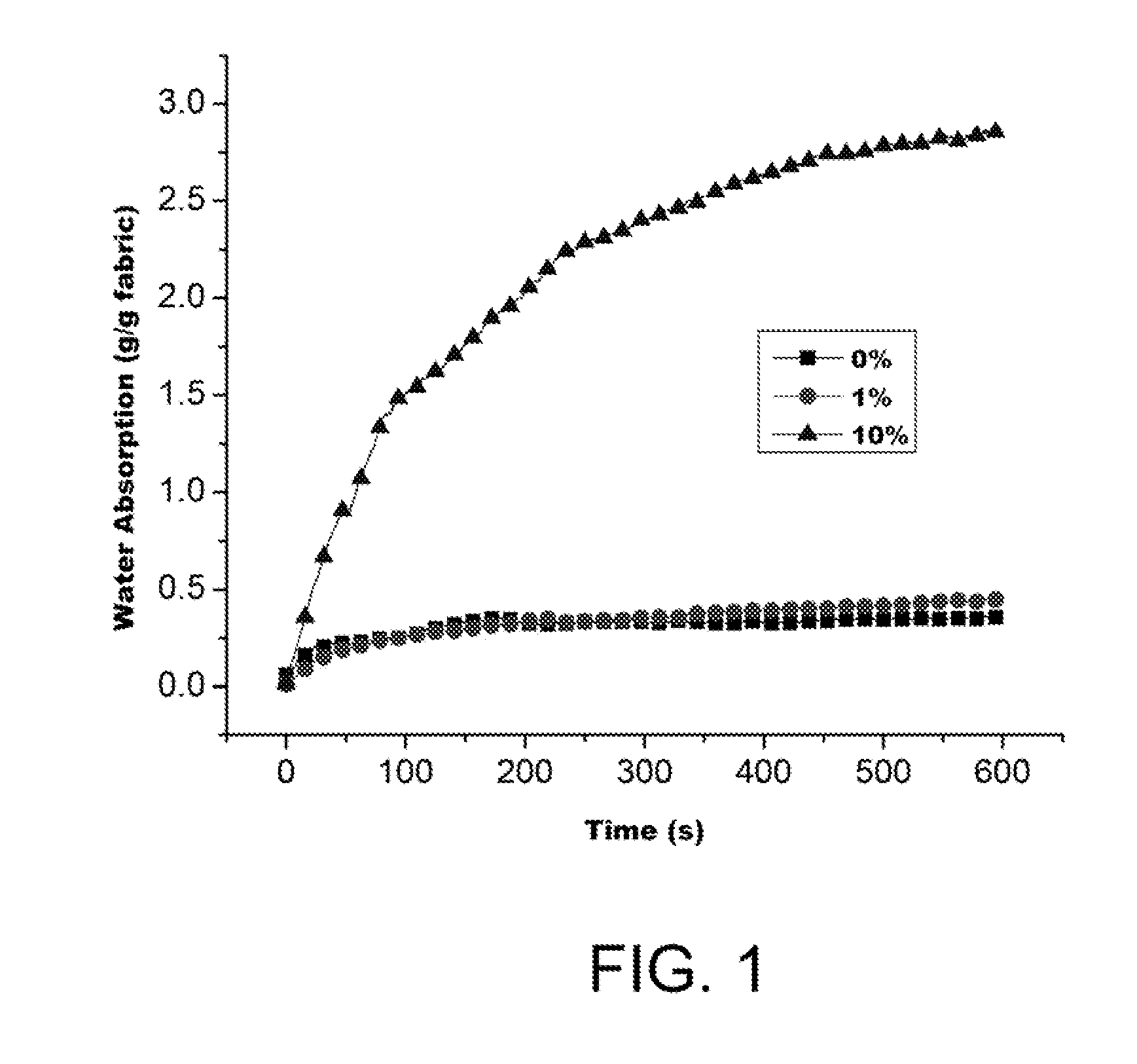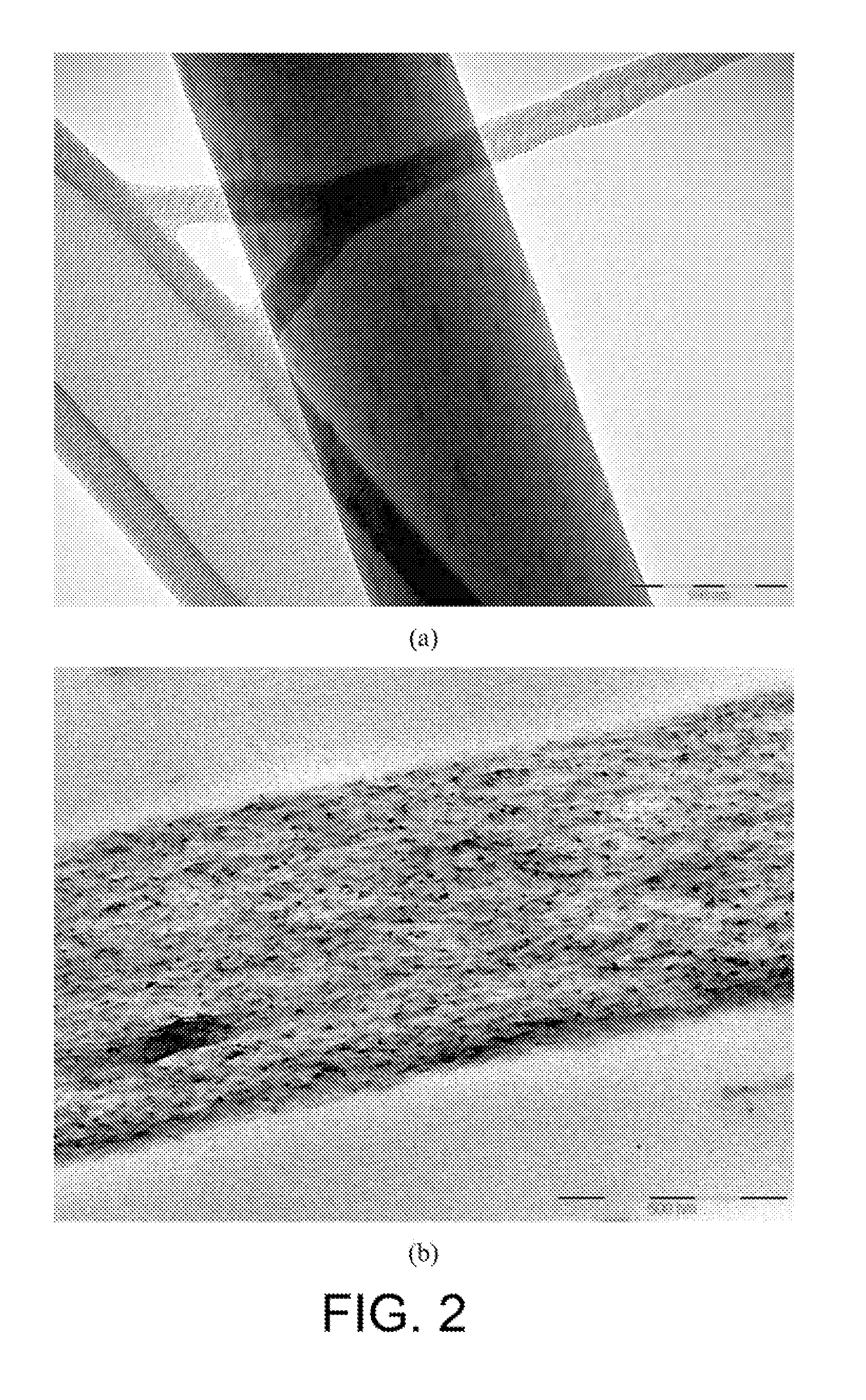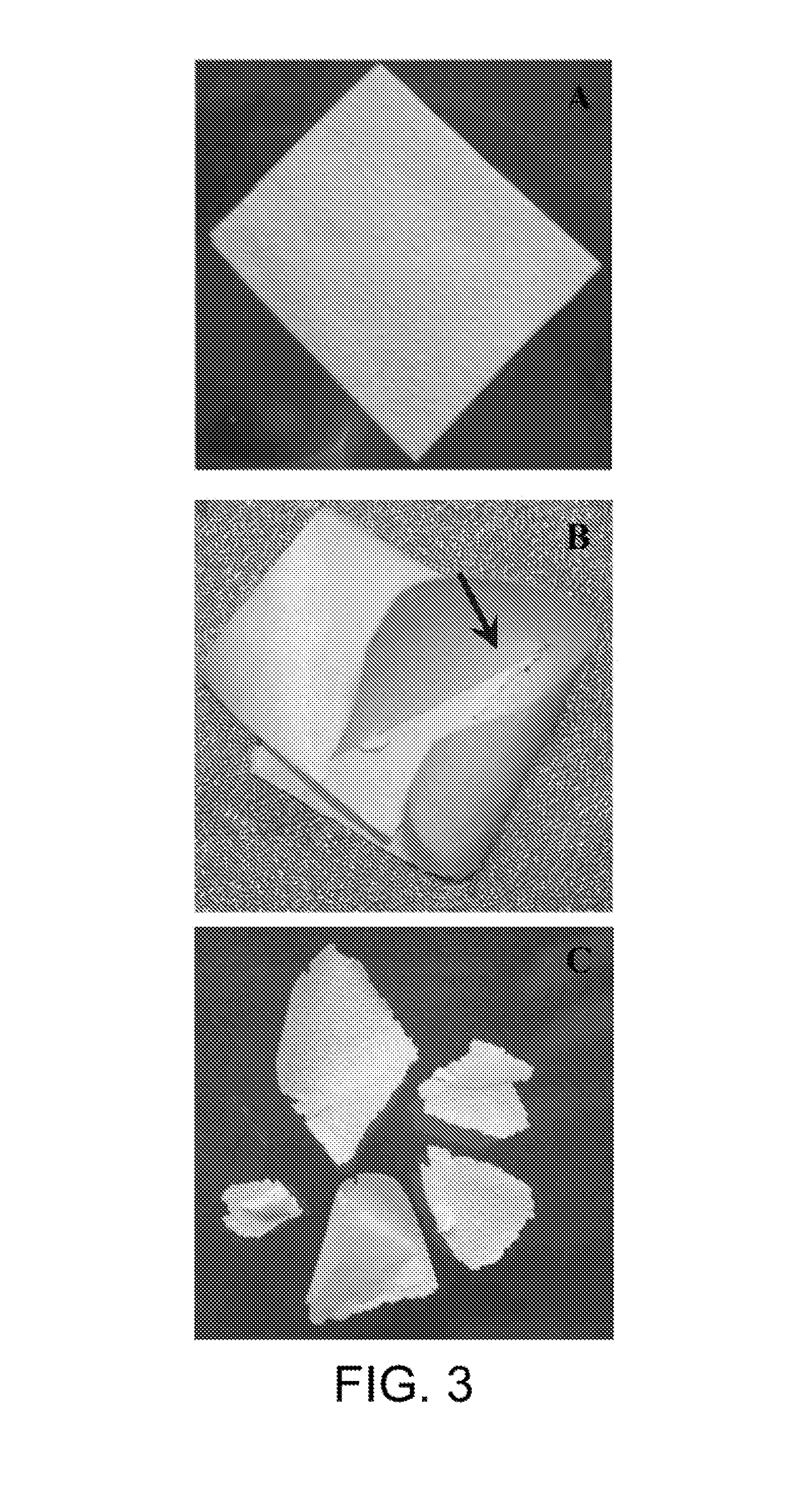Biodegradable chemical delivery system
a delivery system and biodegradable technology, applied in the field of biodegradable polymeric materials, can solve the problems of inability to easily biodegrade by microorganisms or enzymes in soil or water, disturbance of the environment, and limited alternative disposal methods, so as to inhibit the growth rate, inhibit the maturation, and promote the growth rate
- Summary
- Abstract
- Description
- Claims
- Application Information
AI Technical Summary
Benefits of technology
Problems solved by technology
Method used
Image
Examples
example 1
6.1 Example 1
Nanocomposite Fibers Electrospun from Poly(lactic Acid) / Cellulose
[0183]Abstract
[0184]This example demonstrates the electrospinning of PLA / cellulose nanocomposite fibers at elevated temperature from Poly(lactic acid) (PLA) in dimethylformamide (DMF) solutions containing suspended cellulose nanofibrils. Cellulose nanofibrils were prepared by sulfuric acid hydrolysis. The rod-like morphology of cellulose nanofibrils was studied by transmission electron microscopy (TEM). Electrospinning conditions were optimized to form PLA / cellulose nanocomposite fibers with uniform diameters and smooth morphology at cellulose nanofibril content loadings of 0%, 1 wt % and 10 wt % (on the weight of PLA). Surface elemental composition analysis confirmed the presence of cellulose nanofibrils at the surface of PLA nanocomposite fibers. Incorporation of cellulose nanofibrils increased PLA crystallinity in the resulting nanocomposite fibers. As the cellulose nanofibril content increased, the ele...
example 2
6.2 Example 2
Hydrolytic Degradation of Nanocomposite Fibers Electrospun from Poly(lactic Acid) / Cellulose Nanocrystals
[0240]Summary
[0241]The influence of cellulose nanocrystals on the hydrolytic degradation of electrospun PLA / cellulose nanocomposite fibers was investigated. As the cellulose nanocrystal content increased, the electrospun non-woven fabrics became increasingly hydrophilic. Hydrolytic degradation of the nanocomposite fibers was conducted in phosphate buffer solution (PBS, pH 7.4, 37° C.) with constant shaking. The electrospun PLA / cellulose nanocomposite fibers became rougher and swelled during hydrolytic degradation. The apparent degradation rates based on the molecular weight of PLA were calculated to be 0.0068, 0.0084, and 0.0128 lgM / week for the electrospun PLA / cellulose nanocomposite fibers spun from PLA solutions containing 0.1%, and 10% cellulose nanocrystals, respectively. A linear relationship between 1 gM and the degradation time suggests that the hydrolytic deg...
example 3
6.3 Example 3
Nanocomposite Fibers Electrospun from Poly(Lactic Acid) / Cellulose Nanocrystals for Sustained Release of a Dye that Mimics the Diffusion Characteristics of Several Pesticides
[0282]Abstract
[0283]Nanocomposite fibers electrospun from poly(lactic acid) (PLA) containing 0%, 1%, and 10% cellulose nanocrystals were used as chemical delivery systems targeted for controlled release delivery of pesticides. Columbia Blue, a hydrophobic dye with a molecular weight within the pesticide range, was used as a model pesticide for examining release rate profiles of the electrospun nanocomposite fibers. Fifty percent of Columbia Blue (based on the weight of PLA) was incorporated into the nanocomposite fibers during electrospinning. Columbia Blue was released from the electrospun nanocomposite fibers through both diffusion-controlled mechanism and degradation-controlled mechanism. The electrospun nanocomposite fibers containing Columbia Blue formed different crystalline polymorphs than the...
PUM
| Property | Measurement | Unit |
|---|---|---|
| Temperature | aaaaa | aaaaa |
| Temperature | aaaaa | aaaaa |
| Temperature | aaaaa | aaaaa |
Abstract
Description
Claims
Application Information
 Login to View More
Login to View More - R&D
- Intellectual Property
- Life Sciences
- Materials
- Tech Scout
- Unparalleled Data Quality
- Higher Quality Content
- 60% Fewer Hallucinations
Browse by: Latest US Patents, China's latest patents, Technical Efficacy Thesaurus, Application Domain, Technology Topic, Popular Technical Reports.
© 2025 PatSnap. All rights reserved.Legal|Privacy policy|Modern Slavery Act Transparency Statement|Sitemap|About US| Contact US: help@patsnap.com



